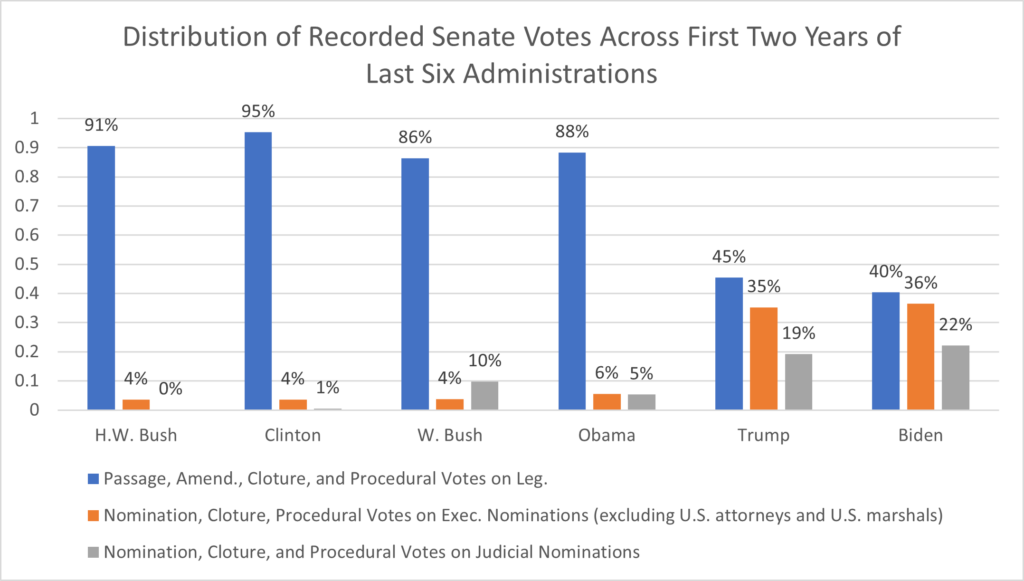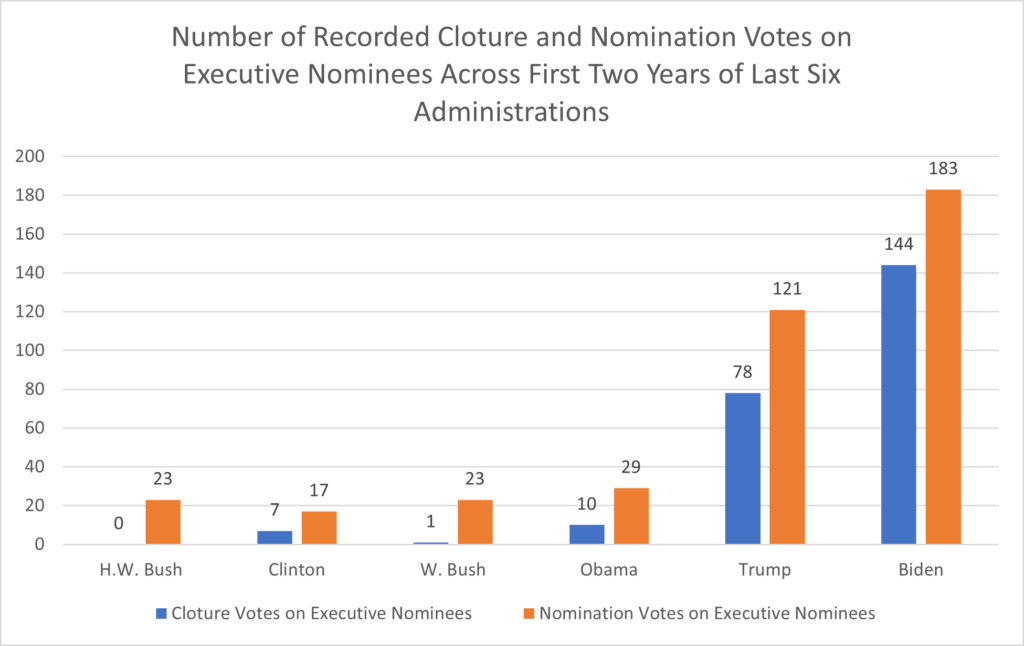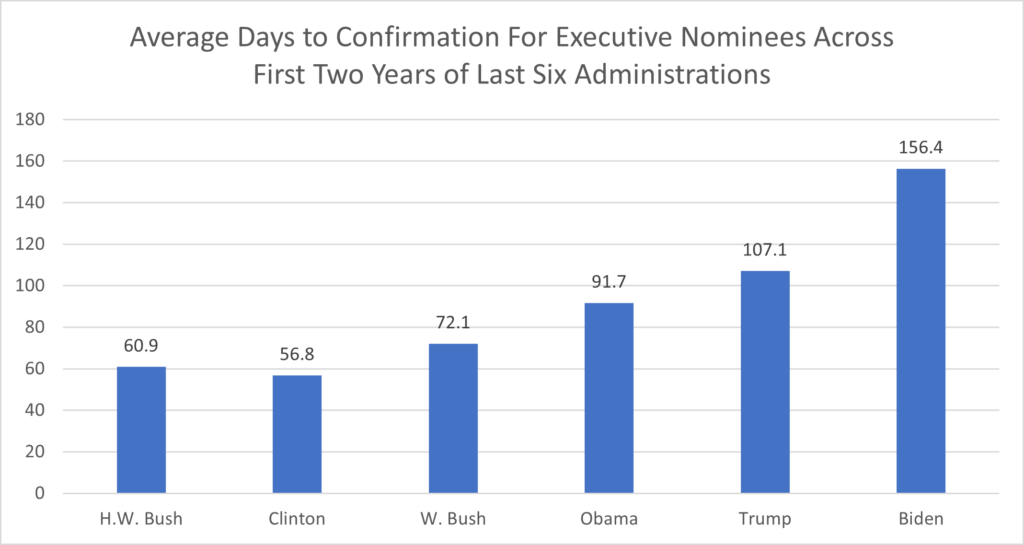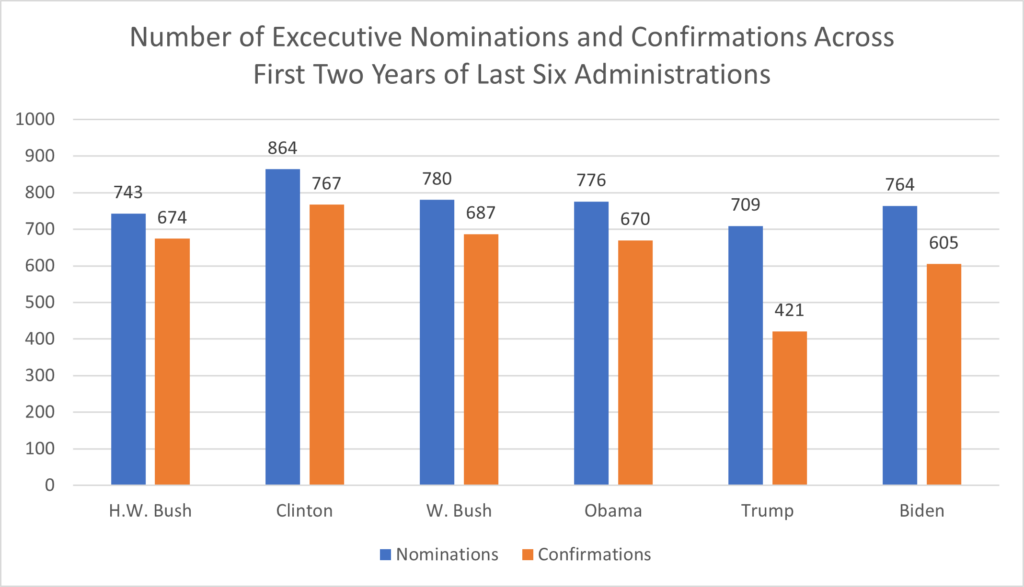The broken Senate confirmation process is eating up precious floor time
Over the past two decades, the Senate has spent increasingly more floor time processing individual presidential nominees while confirming fewer of them, leaving what has historically been characterized as the world’s greatest deliberative body less opportunity to consider the issues of the day and fill critical leadership vacancies, according to recent research by the Partnership for Public Service.
Using an expert analysis of Senate-recorded floor votes from the first two years of the last six presidential administrations, we found that:
The Senate votes much more on nominations than before.
All votes on nominations—direct votes on nominations, cloture votes and procedural votes—made up 58% of recorded votes in the Senate during President Biden’s first two years and 54% of recorded votes during the first two years of the Trump administration. Those votes never made up more than 14% of all votes during the first two years of the Obama, George W. Bush, Clinton and George H.W. Bush presidencies.
Most of this growth comes from votes on executive nominees.
Votes on executive nominations made up 6% or less of Senate-recorded votes during the first two years of the every administration from George H.W. Bush to Obama. That percentage has ballooned to over 35% during Trump and Biden’s first two years in office. While votes on judicial nominees have increased to approximately 20% for Trump and Biden, that growth has not been as stark as it has been for executive nominees.
The number of votes on executive nominations and the number of cloture votes has increased greatly.
There were 40 or fewer combined cloture and nomination votes on executive nominees during the first two years of the Obama, George W. Bush, Clinton and George H.W. Bush administrations. During the Trump administration, there were 78 cloture votes on executive nominees alone, with an additional 121 votes on nominations. Those numbers continued to rise during the first two years of the Biden presidency, with 144 cloture votes and 183 nomination votes on executive nominees. The rise in cloture and nomination votes symbolizes the breakdown in the confirmation process, as more and more nominees cannot be confirmed without two rounds of recorded votes to end debate and for final consideration. Therefore, the Senate must devote increasingly more time to process each individual nominee.
The Senate votes much less on legislation than it did during previous administrations.
Passage, amendments, cloture and procedural votes on legislation made up roughly 90% of all Senate votes during the first two years of the Obama, George W. Bush, Clinton, and George H.W. Bush administrations. However, those types of votes made up only 45% of votes during the first two years of the Trump administration and 40% of votes during the first two years of the Biden administration.




Partnership President and CEO Max Stier recently highlighted these troubling trends and called for a series of reforms to fix the broken Senate confirmation process, including reducing the number of Senate confirmed positions to updating the Senate’s “privileged” nomination process.
These reforms will allow the Senate to devote its attention to the business of legislating and filling critical leadership vacancies that enable agencies to better serve the public.
